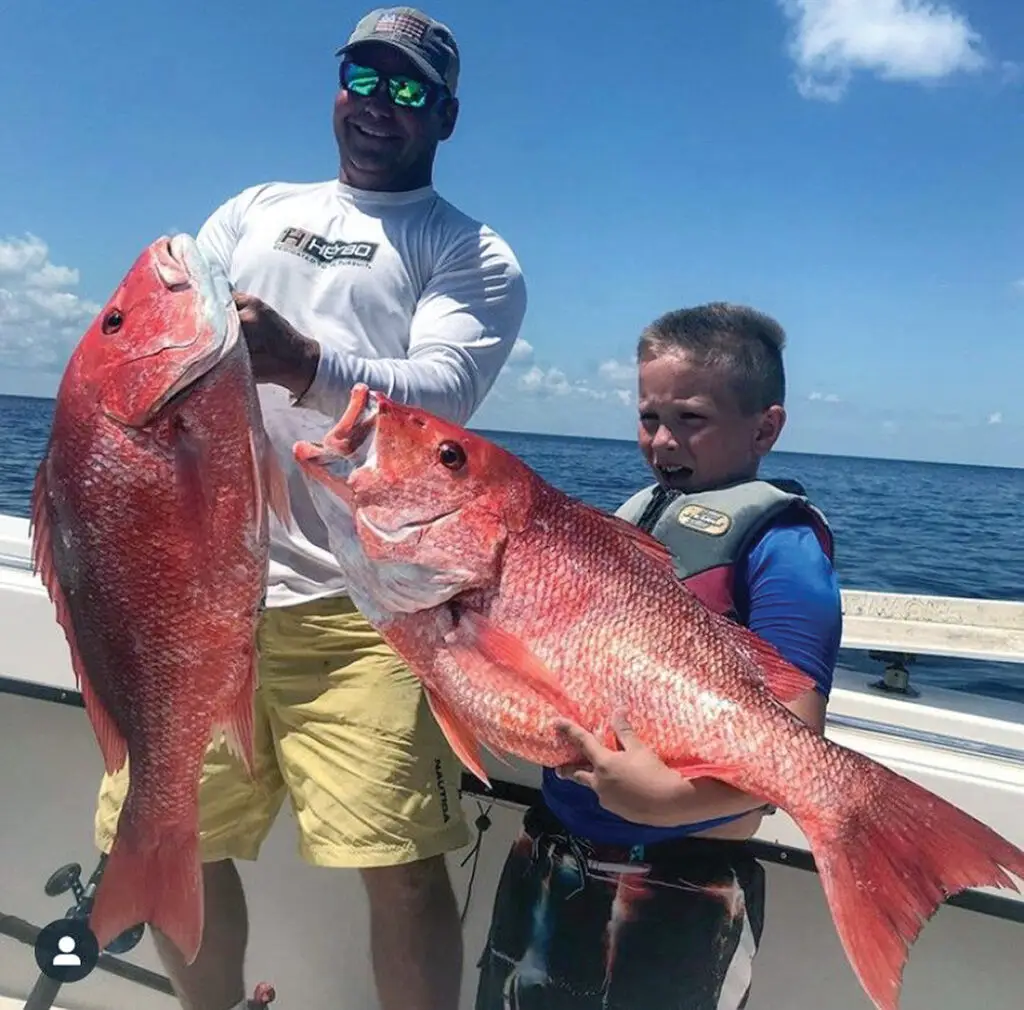While most offshore anglers head into the Gulf of Mexico during the summer to catch red snapper, people might land several other snapper species and many other fish during a day on the water.
The 2024 recreational red snapper season opens May 24 in Alabama and federal waters. The season will continue every Friday through Monday until the state reaches its federal red snapper quota of 591,185 pounds. In early July, the season will remain open from July 1 to July 5 to include the Independence Day holiday.
“We don’t have any problem catching a limit of red snapper,” says Kurt Tillman, who runs Captain Kurt Charters out of Dauphin Island. “We catch a lot of big red snapper, but there are many other fish to catch off Alabama besides red snapper. After we catch our red snapper, we might go to another spot and fish with smaller squid pieces to try for vermilion snapper or something else.”
Also called beeliners, a vermilion snapper looks very similar to a small red snapper. Vermilions average less than one pound and rarely top five pounds. The Alabama state record weighed 7 pounds, 3 ounces. Beeliners can provide incredible action on light tackle. Use smaller hooks and squid pieces for bait.
“Vermilion snapper are probably the most common snapper off Alabama after red snapper,” says Scott Bannon, Alabama Marine Resources Division director. “Many people prefer to catch vermilion snapper because they are easier to clean than red snapper and people can keep more of them. Vermilion snapper frequently stay around the same reef complexes as red snapper, but some reefs might hold more vermilion snapper.”

Also called gray snapper, mangrove snapper look grayish green with a reddish tint ranging from copper to brick red. They rarely top 10 pounds, but the state record weighed 18 pounds.
Mangroves frequently enter water less than 20 feet deep and commonly rise high in the water column. Mangroves sometimes stay around rocky jetties and shallow platforms. Notorious bait stealers, mangroves occasionally hit flies, spoons, soft plastics and other lures, but typically prefer live bait such as small croakers, mullets or menhaden, also called pogies. Many anglers chum them to the surface and flip baits to individual fish they see.
“People sometimes catch gray snapper in the Perdido Pass area or Mobile Bay,” Bannon says. “It’s very common to catch mangrove snapper around the nearshore rigs.”
Another small species, lane snapper seldom grow more than about 18 inches long, but the state record weighed 8 pounds, 1 ounce. Also called candy snapper, these delicious diminutive fish appear bright rosy red with broken horizontal yellow stripes on their sides.
Rarely caught by recreational anglers, cubera snapper take the title in the family heavyweight division. These ocean leviathans can weigh more than 100 pounds. The world record came in at 124.75 pounds, a fish caught off Louisiana. The Alabama state record weighed 94 pounds, 3 ounces. With a mouthful of extremely sharp canine teeth, they can do serious damage to flesh so handle them carefully.
Among the most brightly colored snappers, a yellowtail snapper displays a bright yellow band running from the snout to its tail. It continues to widen to cover the entire tail and tail fins with a bright yellow splash. The rest of the body looks olive to purplish with irregular yellow spots. Rarely seen in the western and northern gulf, yellowtails do appear off Alabama at times. The Alabama state record weighed 9.6 pounds.
In the Gulf, anglers might also catch several other types of snapper. These include mutton snapper, dog snapper, silk snapper and other species.
While dropping baits to the bottom, anglers could also catch amberjack, spadefish, triggerfish, tilefish and various grouper species. Higher in the water column, anglers might land cobia, king mackerel, Spanish mackerel, dolphin fish, also called dorado or mahi, and tripletail. Farther offshore, blue marlin, white marlin, sailfish, wahoo, blackfin and yellowfin tuna roam.
With more than 10,000 artificial reefs covering more than 1,200 square miles off the coast, Alabama ranks as one of the best places on the Gulf Coast to catch red snapper and other bottom or reef fish. For reef information, visit outdooralabama.com and hover to saltwater fishing and then click on artificial reefs.
Anglers might catch many other species off Alabama coasts. When people drop baits into the Gulf of Mexico waters, no telling what they might catch. Seasons, daily limits and other regulations vary by species so always check the regulations before keeping anything. Visit outdooralabama.com and click fishing, then saltwater fishing.
John N. Felsher is a professional freelance writer who lives in Semmes, Ala. He also hosts an outdoors tips show for WAVH FM Talk 106.5 radio station in Mobile, Ala. Contact him at [email protected] or through Facebook.




